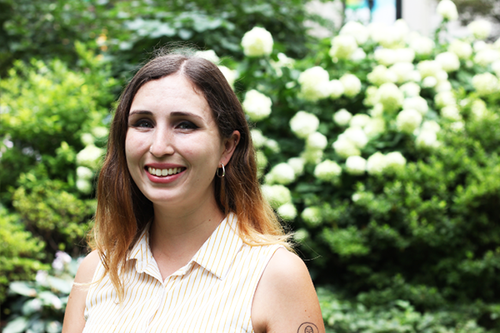This Streetscape Was Designed by a Deaf Person for Deaf People

Did you know that one of the first-ever curb cuts—that is, the place where a sidewalk slopes downward to meet the street—was built in the mid-1940s to aid World War II veterans who were returning home with disabilities? Now, of course, they’re commonplace, thanks to the Americans with Disabilities Act (ADA). But here’s the thing: Although the ADA provides guidelines to improve the experience of people with physical disabilities, it does not always consider factors that impact those with sensory or mental disorders—and that’s where the concept of universal design comes into play, along with the work of brilliant landscape architects like Alexa Vaughn.

Vaughn, of Olin Studio, pioneered her concept, called “DeafScape,” to help make streets more accessible for deaf people. The work of Vaughn, who is deaf herself, is so holistic that the American Society of Landscape Architects consulted with her on their own universal design guidelines—for streets, parks, plazas, playgrounds, and gardens—that were released earlier this year. Vaughn’s DeafScape is at once functional and beautiful, not only creating an accessible space for those with physical and mental impairments, but also benefiting the population as a whole through thoughtful design elements.

Vaughn’s design draws on the principles of the DeafSpace Project, which was established by Hansel Bauman at Gallaudet University, a school for deaf students in Washington, D.C. The DeafSpace Project addresses the architectural design elements that would improve the experience of a deaf person. In Vaughn’s essay, “DeafScape: Applying DeafSpace to Landscape,” she writes, “Within a predominantly hearing world, the built environment poses many real, physical barriers. [...] These barriers range widely from the absence of visual signage on public transportation to the lack of space to communicate with sign language while walking on public sidewalks.”


There are eight key elements inherent in her concept: textured transitions, a shoulder zone, degrees of enclosure, night lighting, flexible seating, a wider pathway, rhythm, and visual cues. With the prioritization of these concepts, Vaughn is creating a more flexible—and inclusive—built environment. And her vision is coming to life one street at a time. Seattle’s Bell Street Park (pictured at the top of this article), designed by MIG | SvR, is a universal street, as is Jackson Street in St. Paul, Minnesota, designed by Toole Design. More streets are being studied for implementation in 2020.
Vaughn and her colleagues at Olin believe that all landscapes, whether they’re universal streets or not, have the potential to be catalysts for human interaction and engagement. Which, it’s safe to say, we can all agree is a good thing these days.
You Might Also Like
